Transformers and magnetic saturation
It seems that even a basic but sound understanding of transformers challenges lots of hams, and even online experts that have been heard to brag of their qualifications so as to intimidate others who might question their words.
So at ARRL EFHW (hfkits.com) antenna kit transformer – revised design #1 – part 2 I estimated that at a current of 4Arms marked the onset of non-linear B-H response, ie the onset of saturation.
One online expert proposed a method that would rate this transformer at maximum 4^2*50=800W at which magnetic saturation would occur.
The referenced article estimated saturation at more like 17000W.
Some very basic transformer concepts
Let’s talk about some really basic transformer concepts.
The diagram above from Wikepedia shows a rectangular magnetic core with two windings, a primary and secondary on opposite limbs of the core.
Note the phase polarity markings (+ / -) and the direction of (conventional) alternating current.
An example for discussion
Above is an example power transformer for discussion, 240V 50Hz 100VA, n=Vs/Vp=1/20, rated primary current 0.416A, core mass around 800g, estimated core loss at 1W/kg is 0.8W, for a simple explanation, leakage is assumed zero and rated load is assumed purely resistive. Note that an AC power transformer is typically rated for primary voltage, frequency and VA, and that they are operated into the low end of BH saturation, a compromise between weight, dissipation and efficiency (and cost of course).
Let’s assume that it is a good design, and for a first analysis, let’s ignore flux leakage, ie flux due to current in one winding that does not induce voltage in the other winding (does not ‘cut’ the other winding). Let’s analyse it with no load and rated load.
No load
With load load, assume zero current flows in the secondary.
The primary winding acts like an iron cored inductor, when voltage is applied, current flows. The current produces magnetic flux and a voltage induced in the primary winding which by Lenz’s law opposes the voltage that created the current.
The current that flows with no-load is known as the magnetising current, it establishes magnetic flux in the core. In a good design, the magnetising current is small wrt rated current. We can extend that and talk of the corresponding magnetising impedance and the magnetising admittance.
For the example 50Hz transformer shown, the magnitude of magnetising current is 12mA, 2.9% of rated current. Magnetising current is a component of primary current in a loaded transformer.
You might at first think that the magnetising impedance Zm is purely inductive, but that would make it lossless and nothing is lossless. In the example case, the phase of Zm is 74°, Zm=5556+j19213Ω.
Magnetising force is given by \(mmf=n(I_p +0.012 \angle -74° – \frac{I_s}{n})=n 0.012 \angle -74° \text{At/m}\).
Rated load
So, when rated current flows in the secondary, it induces a voltage component in the primary winding that opposes the voltage induced in the primary by the magnetising current component, so more primary current flows… rated primary current in a zero leakage scenario.
Print the diagram and annotate it with a pencil, and work through Lenz’s law and the direction of current. Sure, I could have done it, but you will learn more by working through the solutions, you will remember it better, and get confidence in your growing analytical capability.
So, the primary current under rated load is the load current divided by the turns ratio, plus the magnetising current. In this example, Ip=0.416-0.012∠-74°.
Why does the core not saturate?
You need to calculate the net magnetising force by adding the primary and secondary magnetising force components. In this case, recalling that Is=Ip/n for our scenario, \(mmf=n(I_p +0.012 \angle -74° – \frac{I_s}{n})=n 0.012 \angle -74° \text{At/m}\), the same as the no-load magnetising force.
Note that when leakage inductance and winding resistance are factored in, loaded magnetising force is usually a little less than no-load.
If load current does not cause saturation, what does?
Two common causes:
- operating at lower that rated frequency; and
- operating at higher than rated voltage.
Because the B-H response is non-linear, a small increase in primary voltage creates a disproportionate increase in core less (due to higher flux density).
But my guitar amp can be driven to transformer saturation!
Sure, it is being driven to higher voltage and or lower frequencies than the design point, both of which contribute to saturation. Changing the load impedance does not directly cause magnetic saturation.
My ferrite cored EFHW transformer is easily saturated!
Probably not. Naive users often incorrectly blame overheating of the ferrite core beyond the Curie point as magnetic saturation.
Conclusions
- Lenz’s Law is key to understanding.
- Increasing primary voltage or lowering frequency can cause magnetic saturation.
- Increasing load current alone is unlikely to cause magnetic saturation.
- Other non-linear behavior is often wrongly attributed to magnetic saturation.

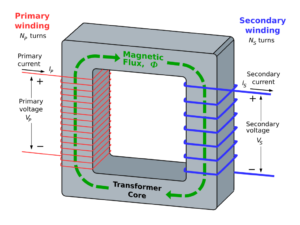











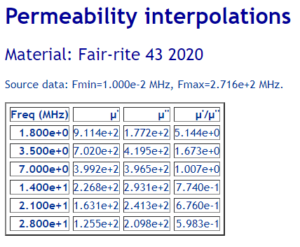
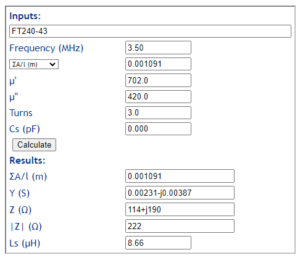
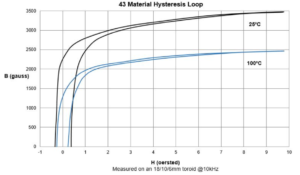
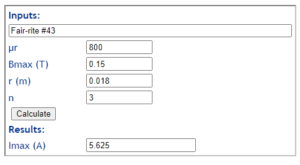



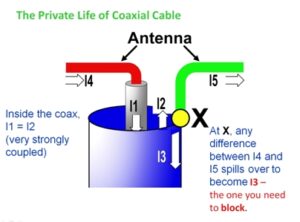


 Ever been working on a project and get stuck on one of those last little...
Ever been working on a project and get stuck on one of those last little...